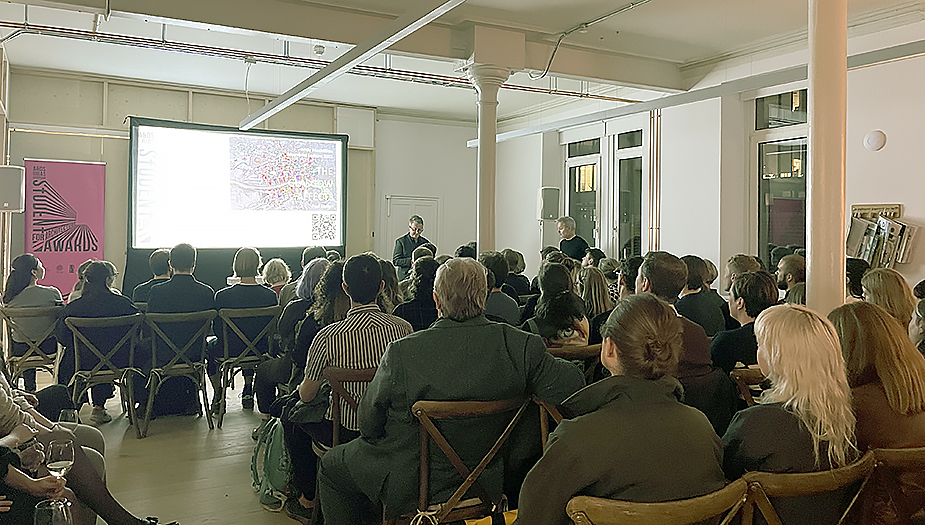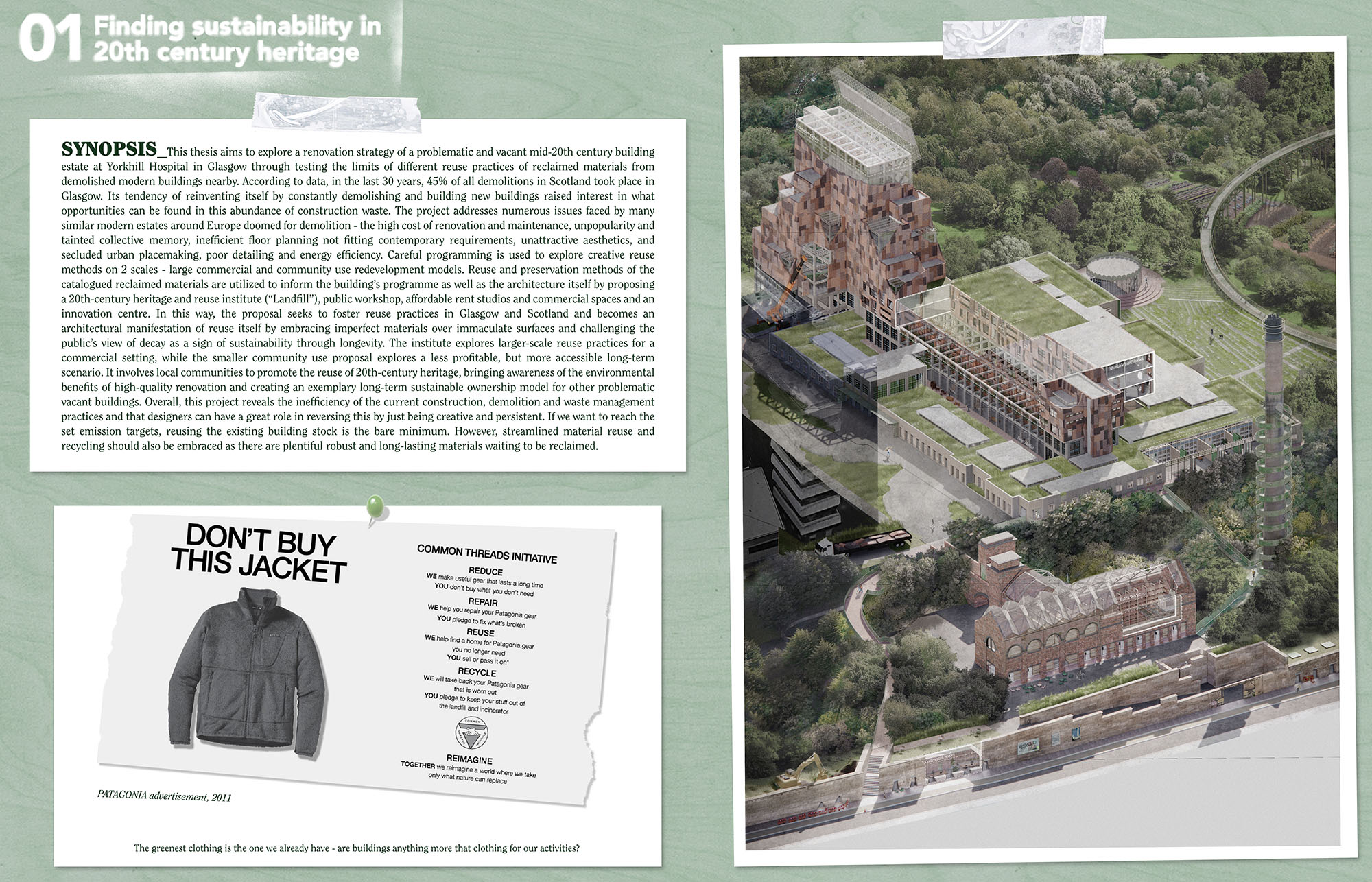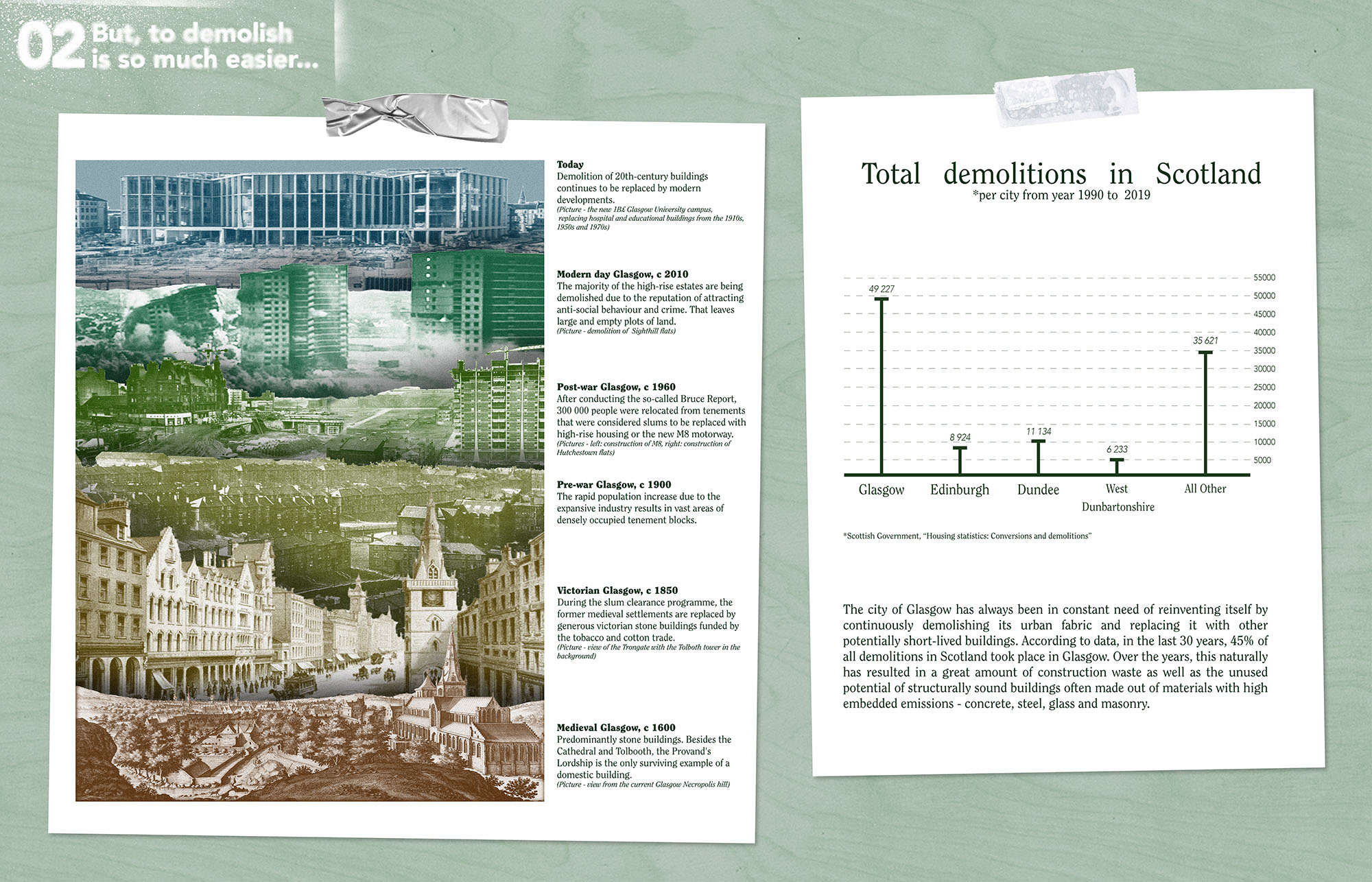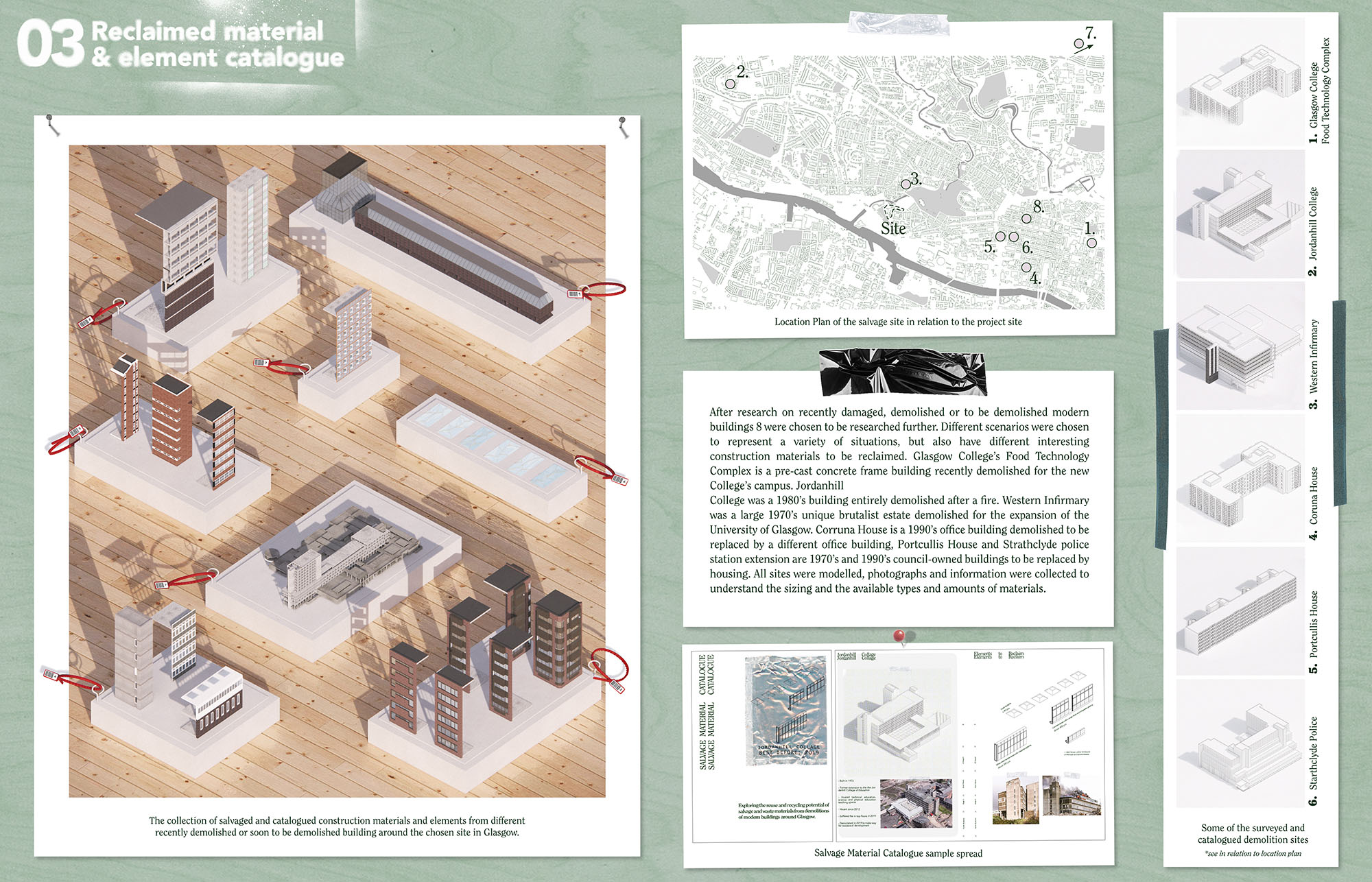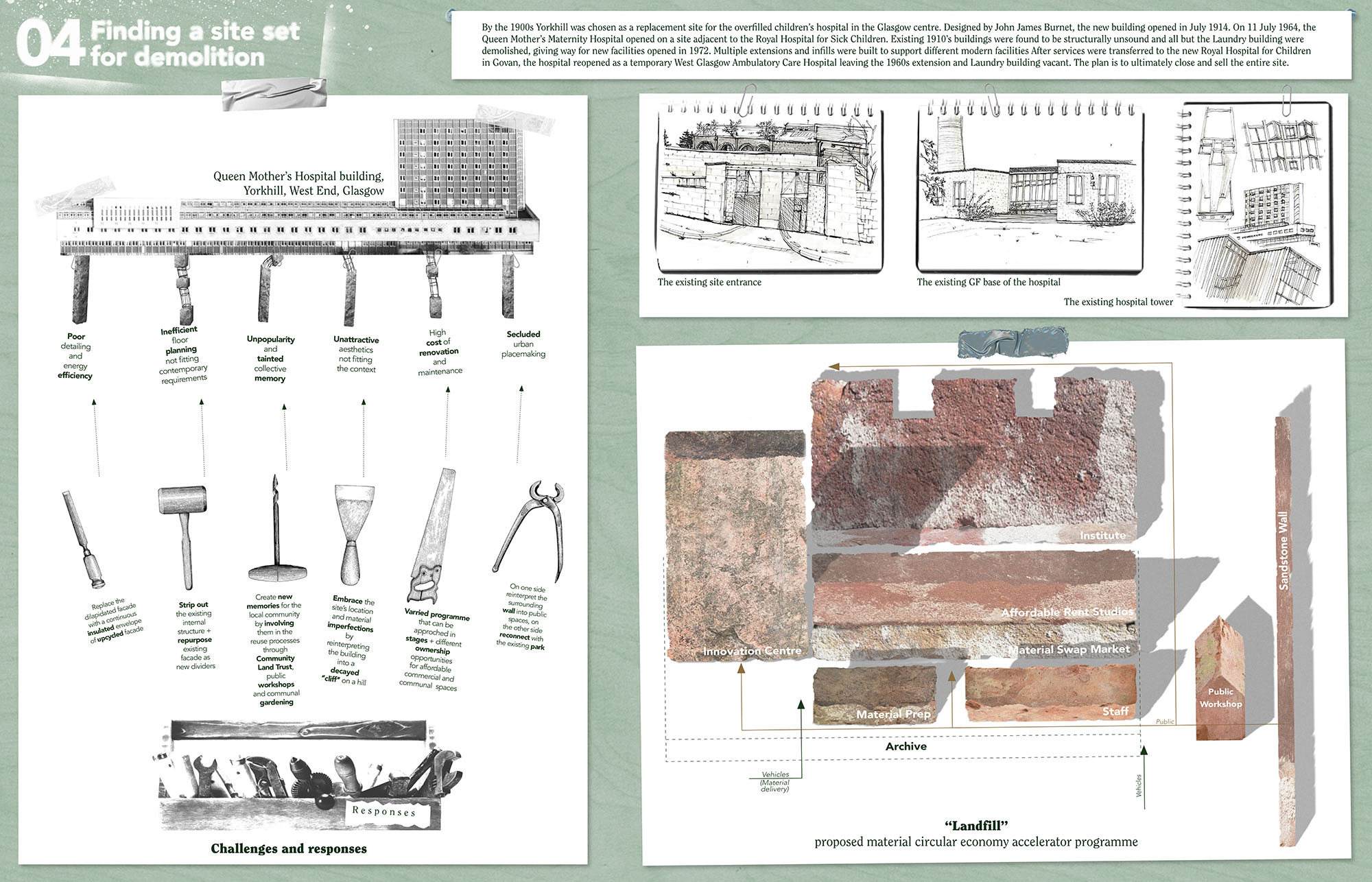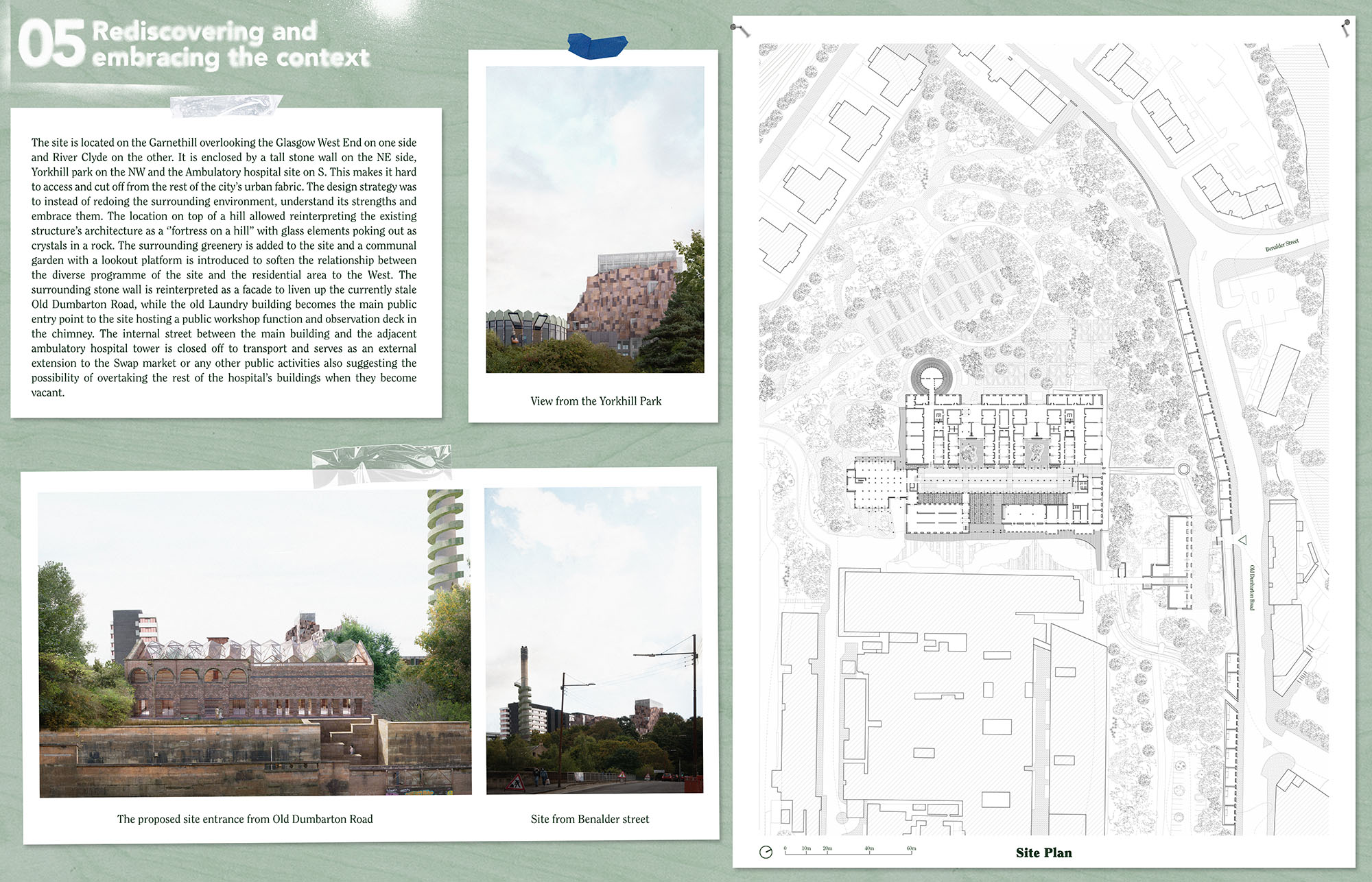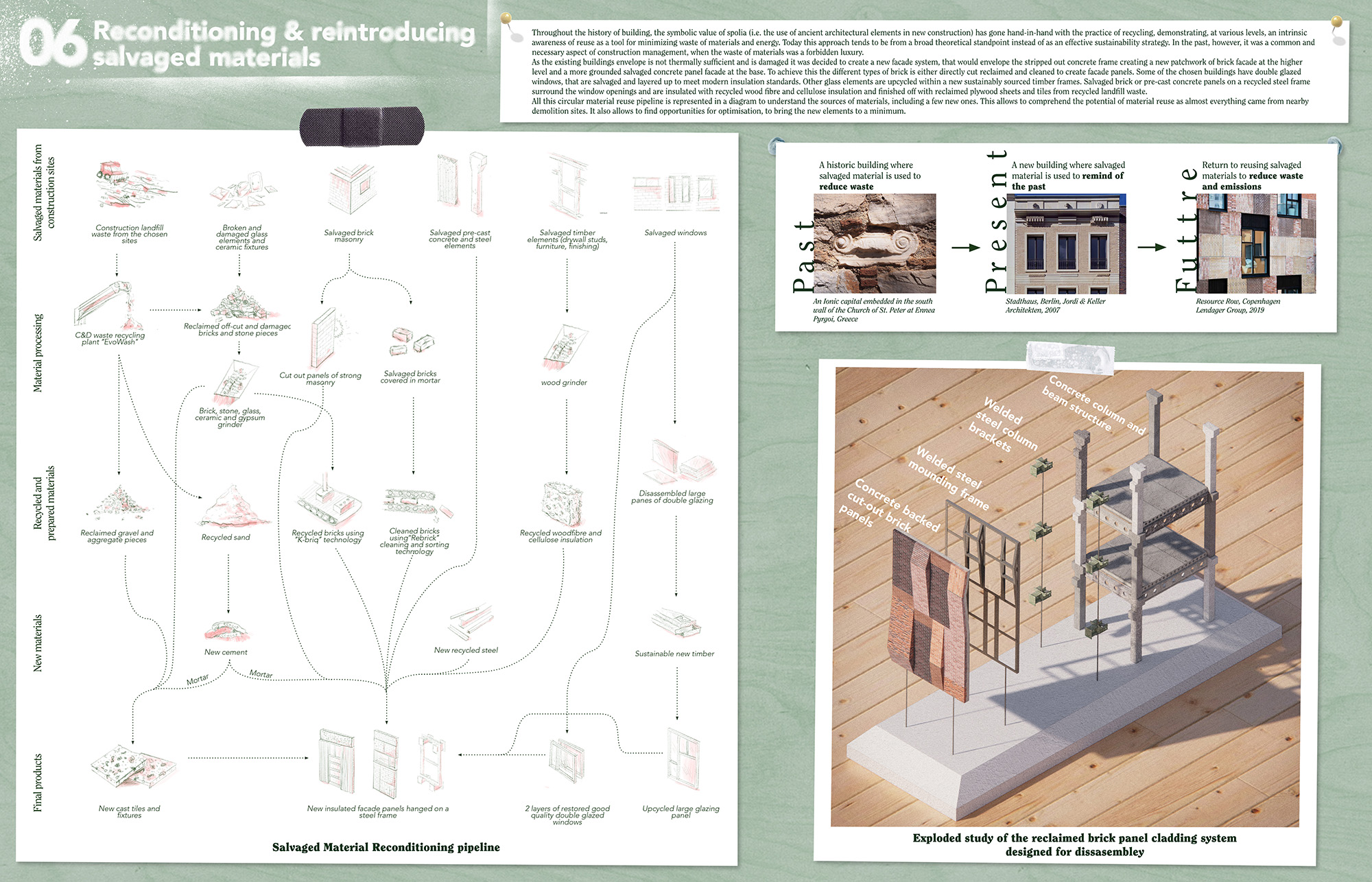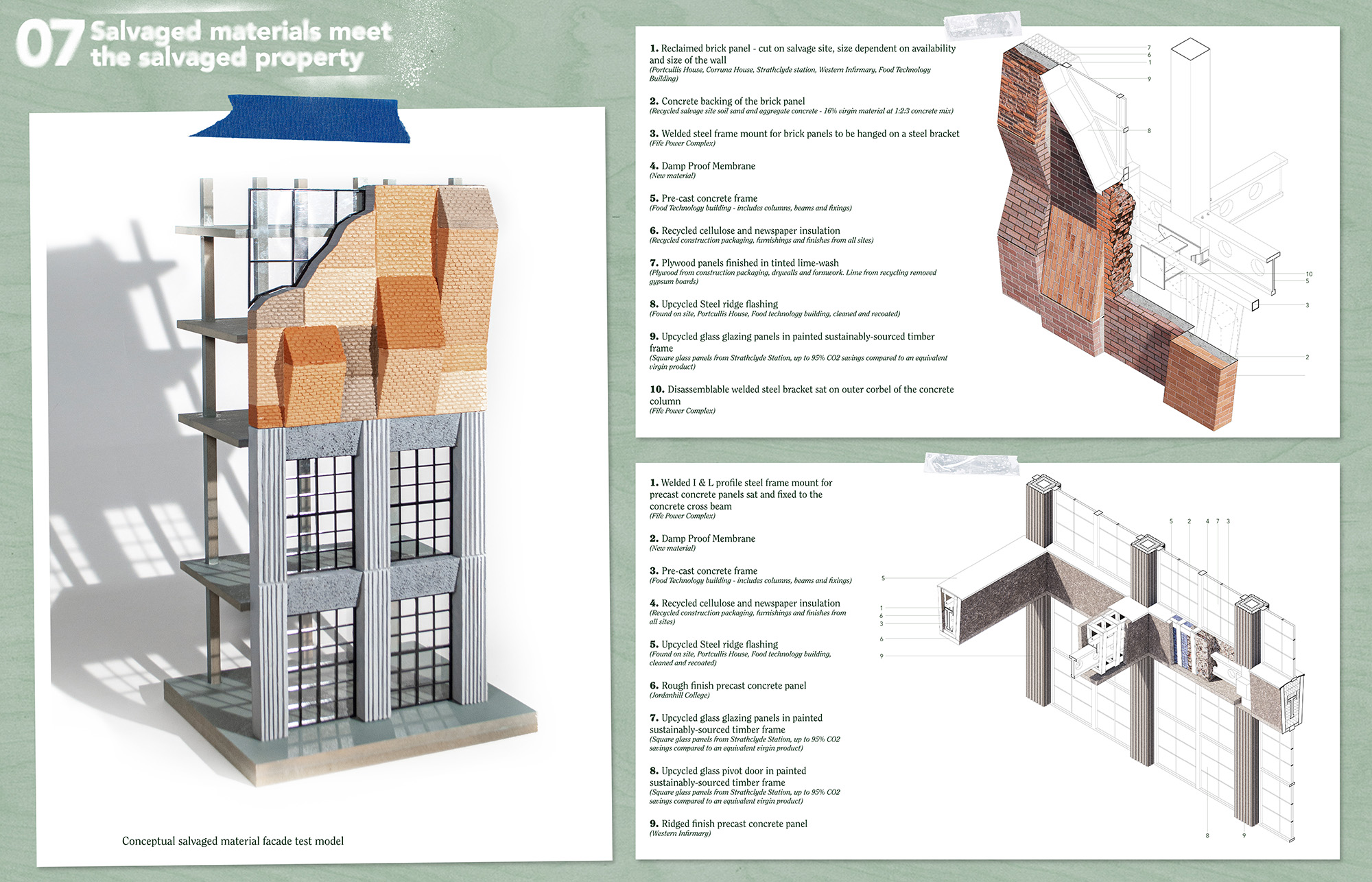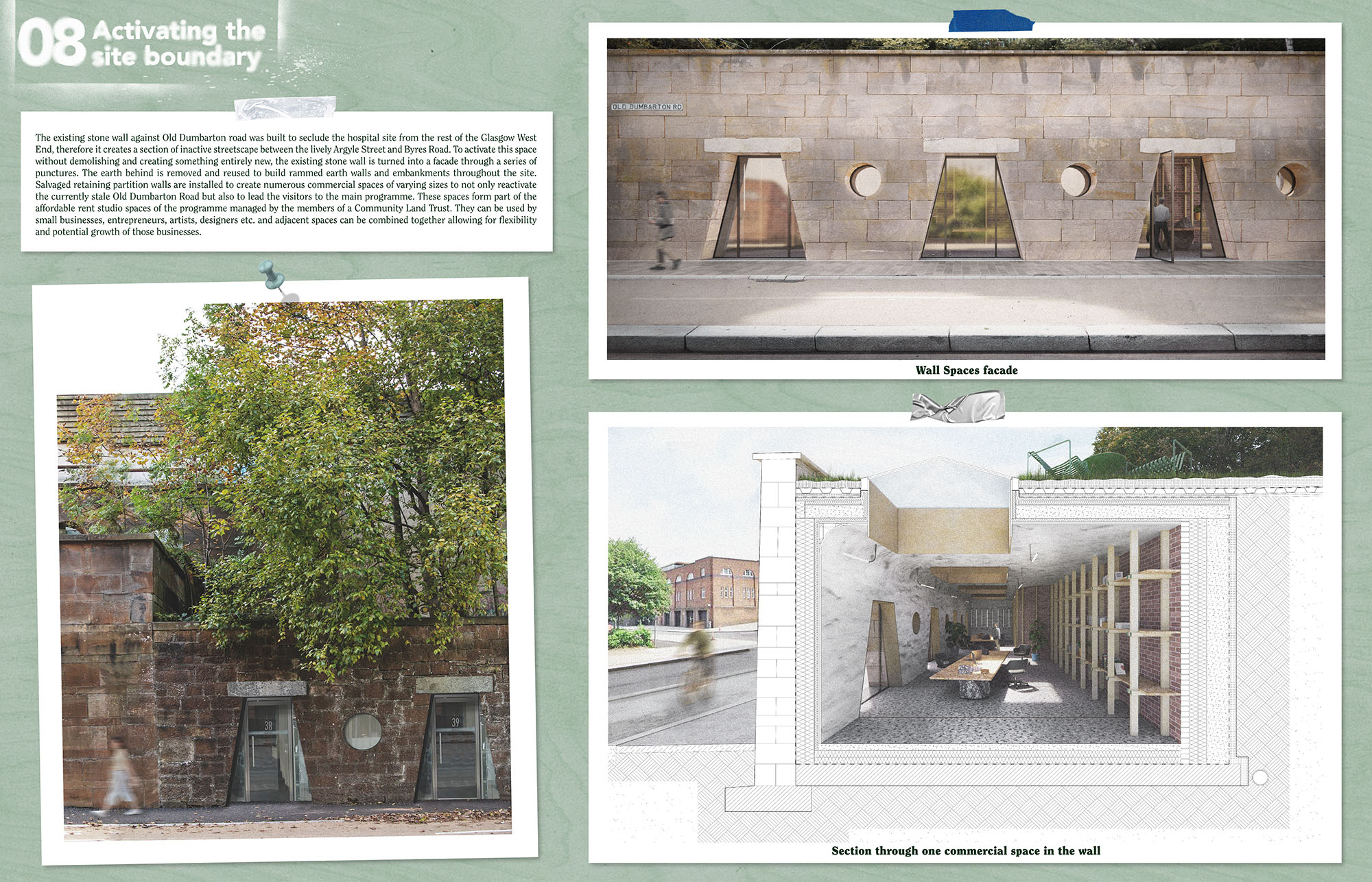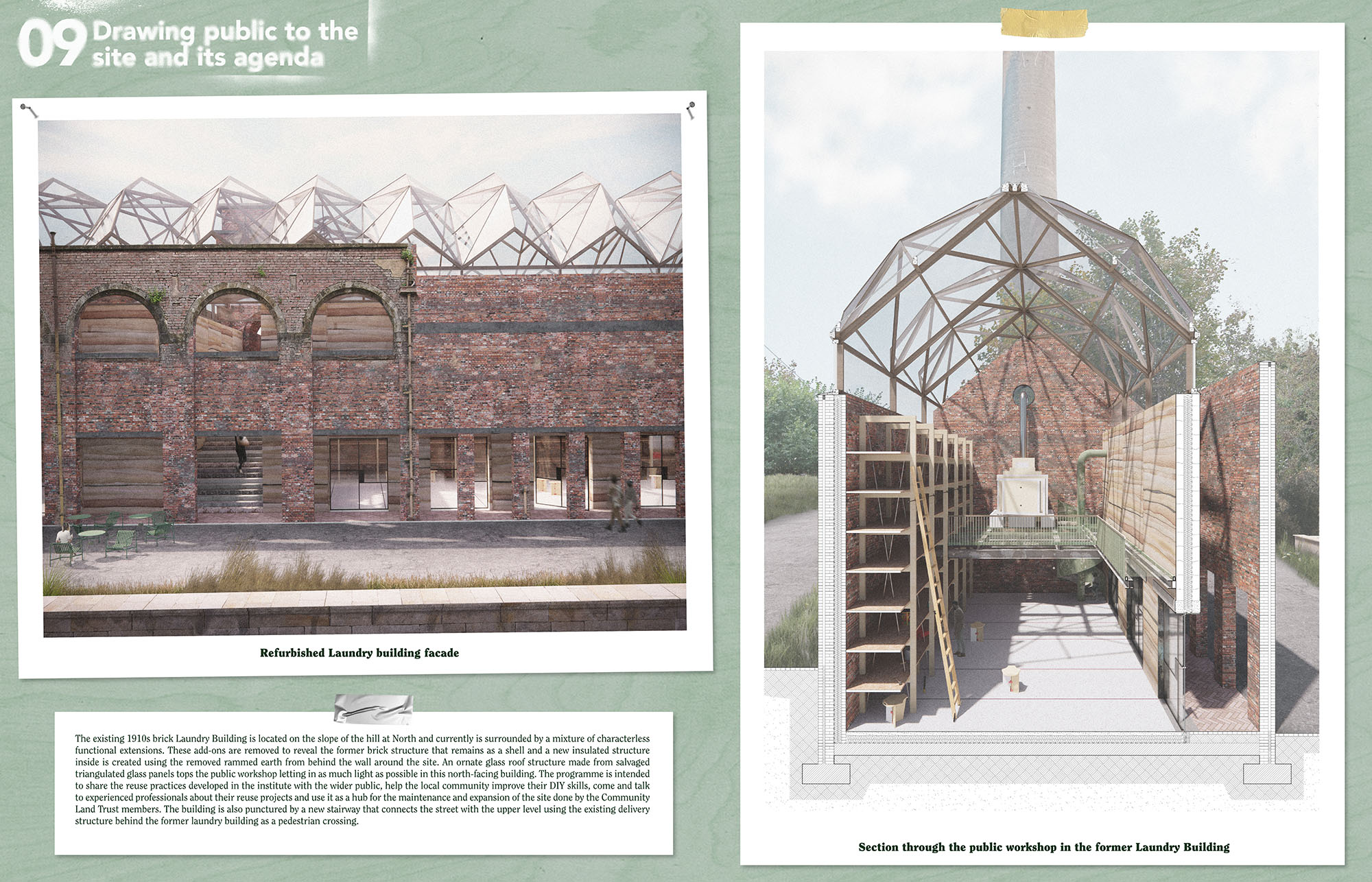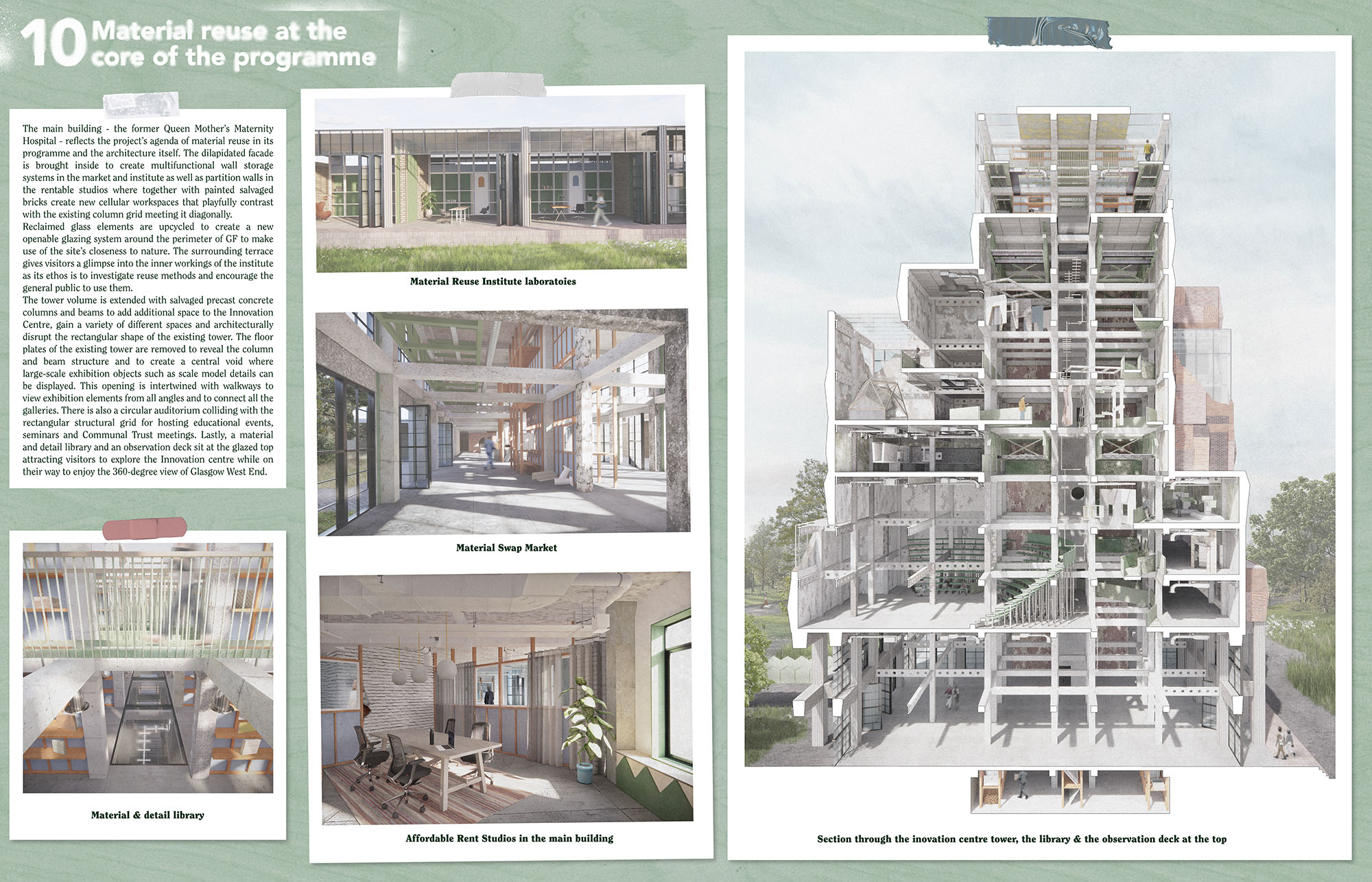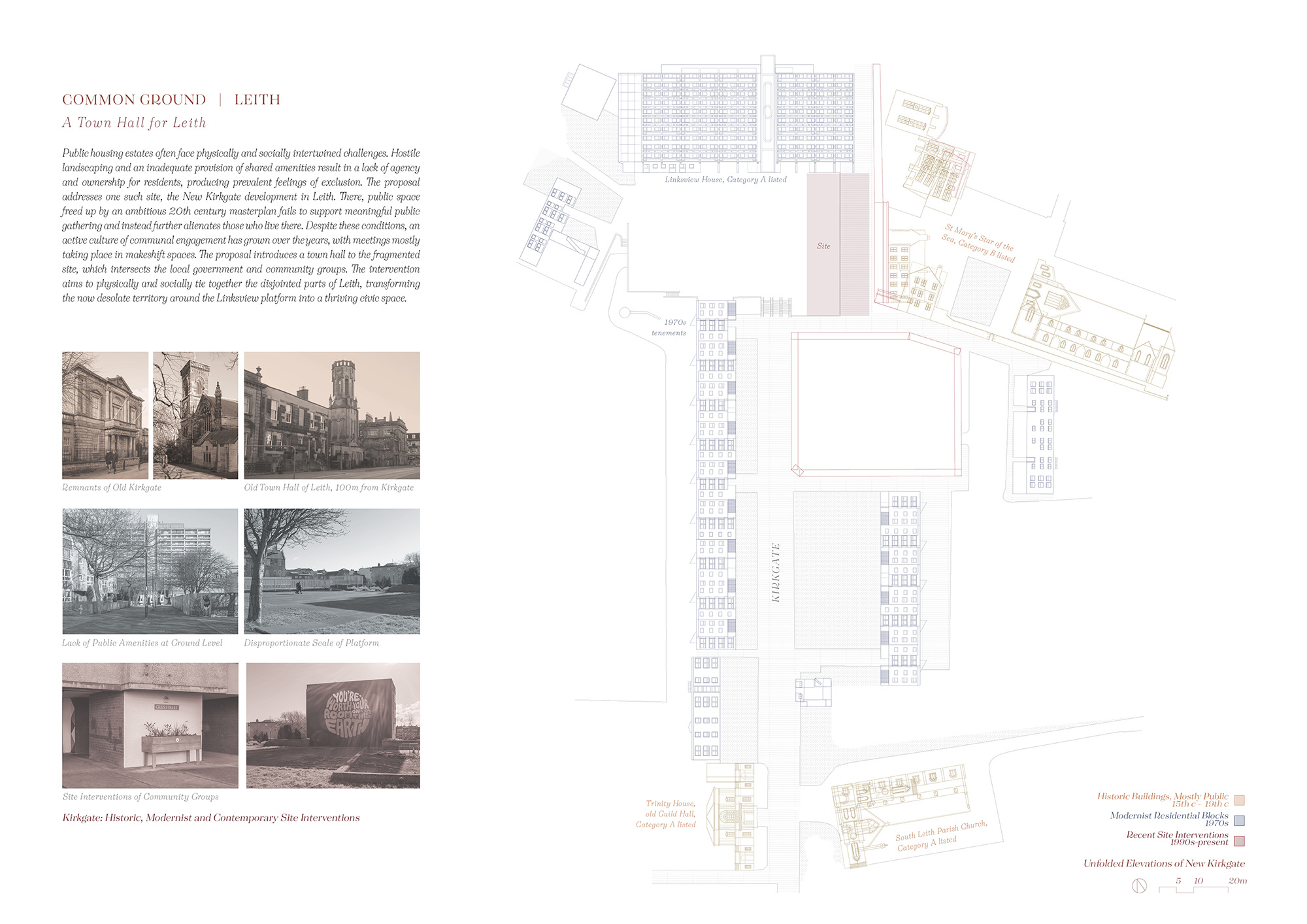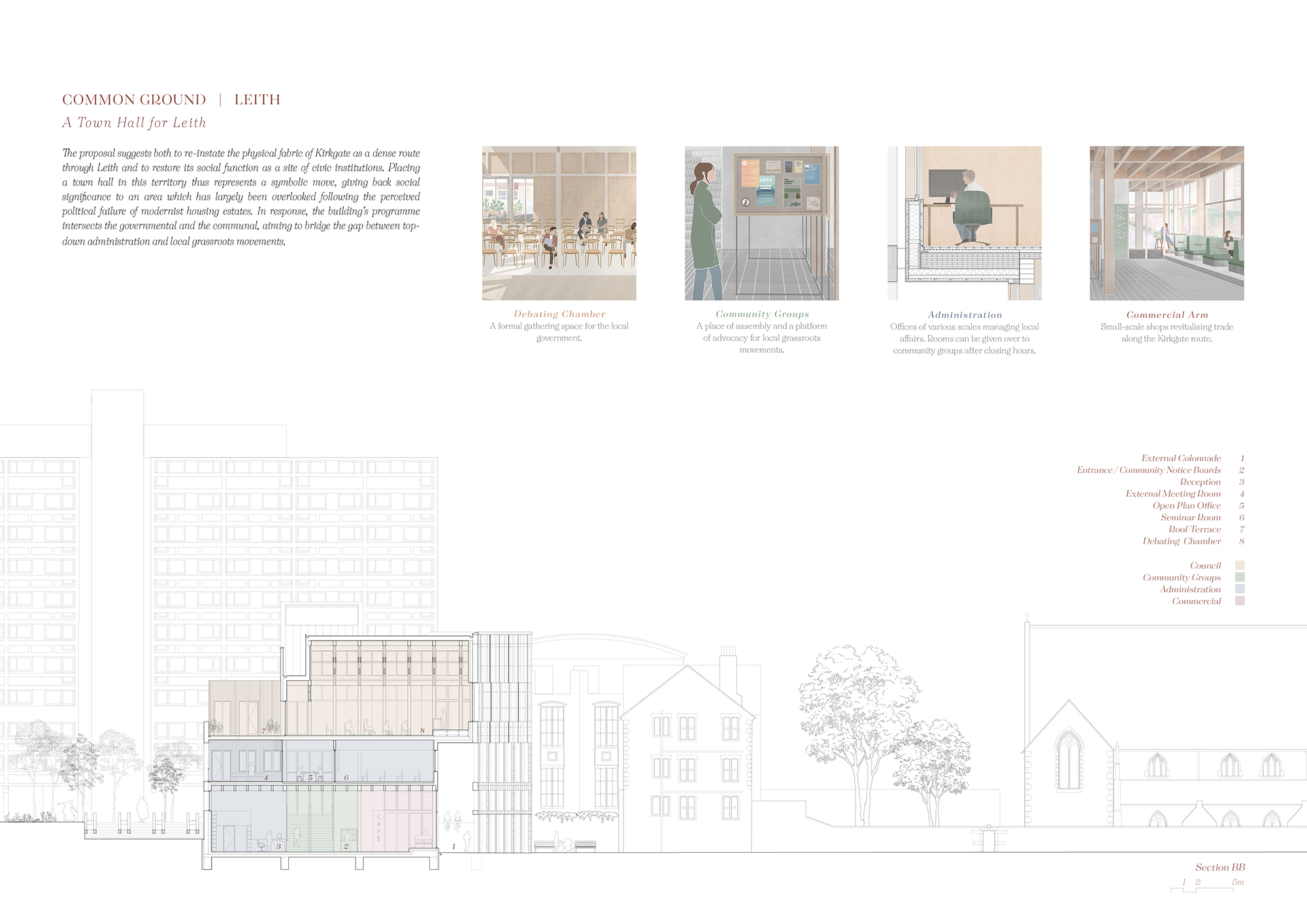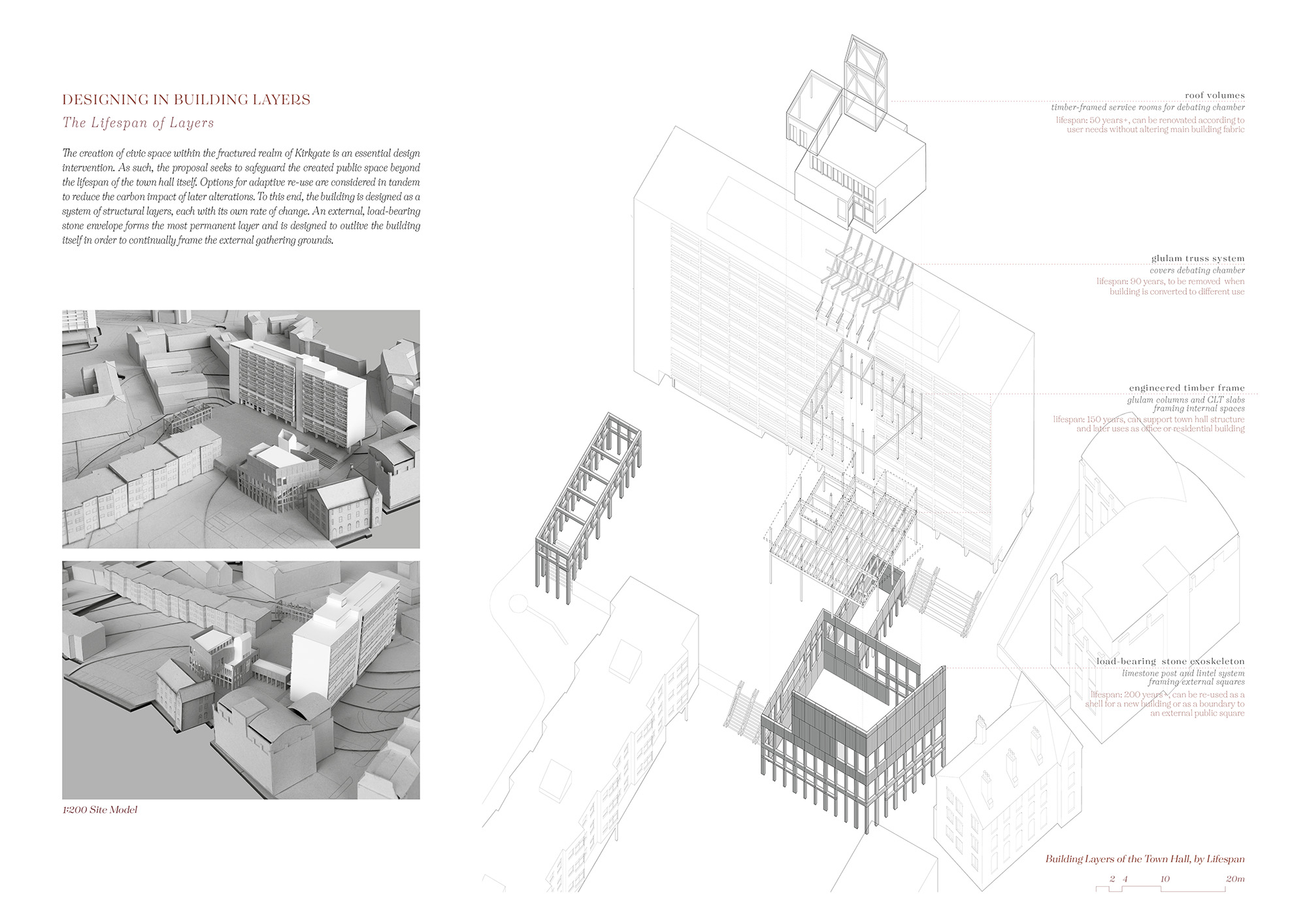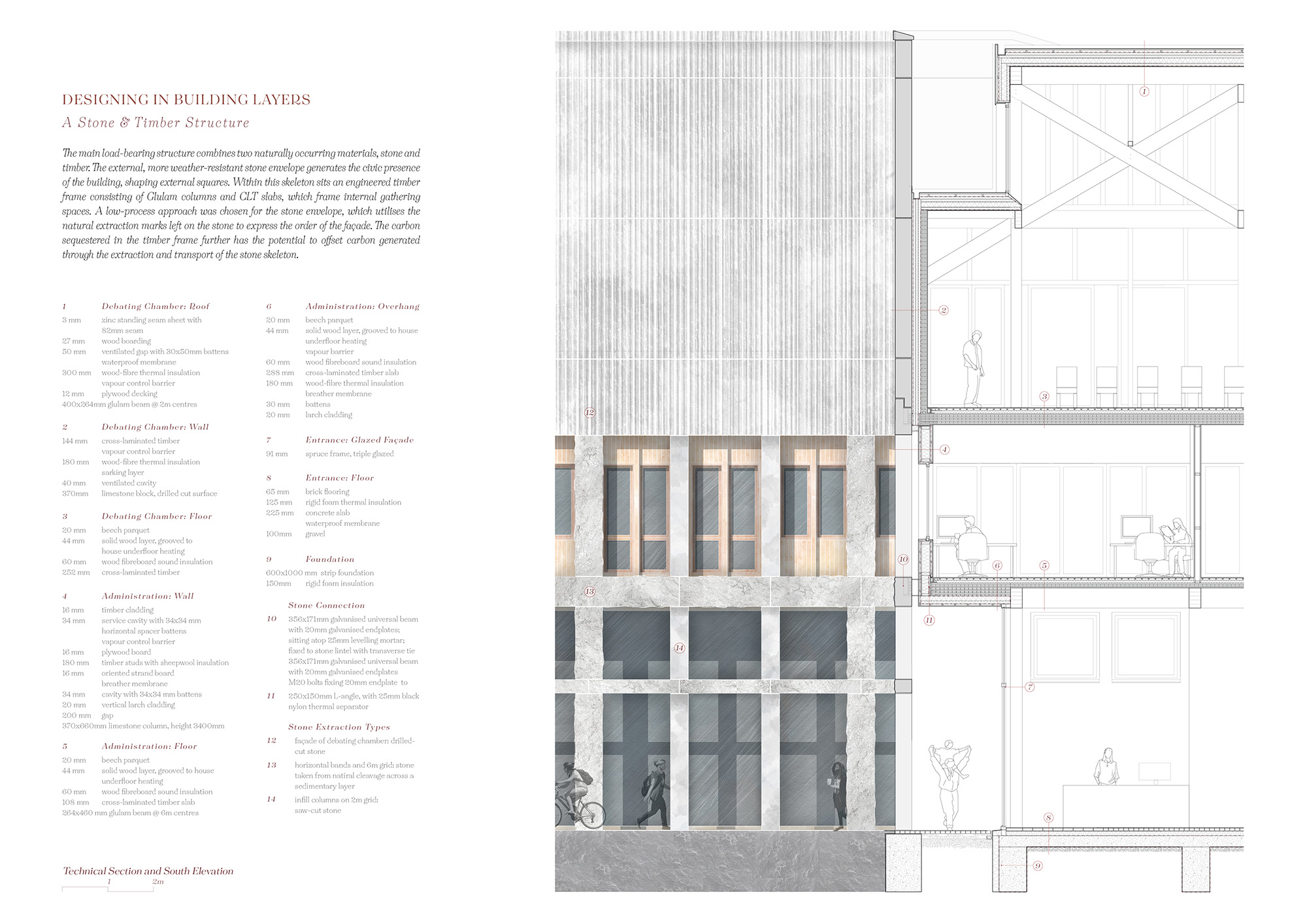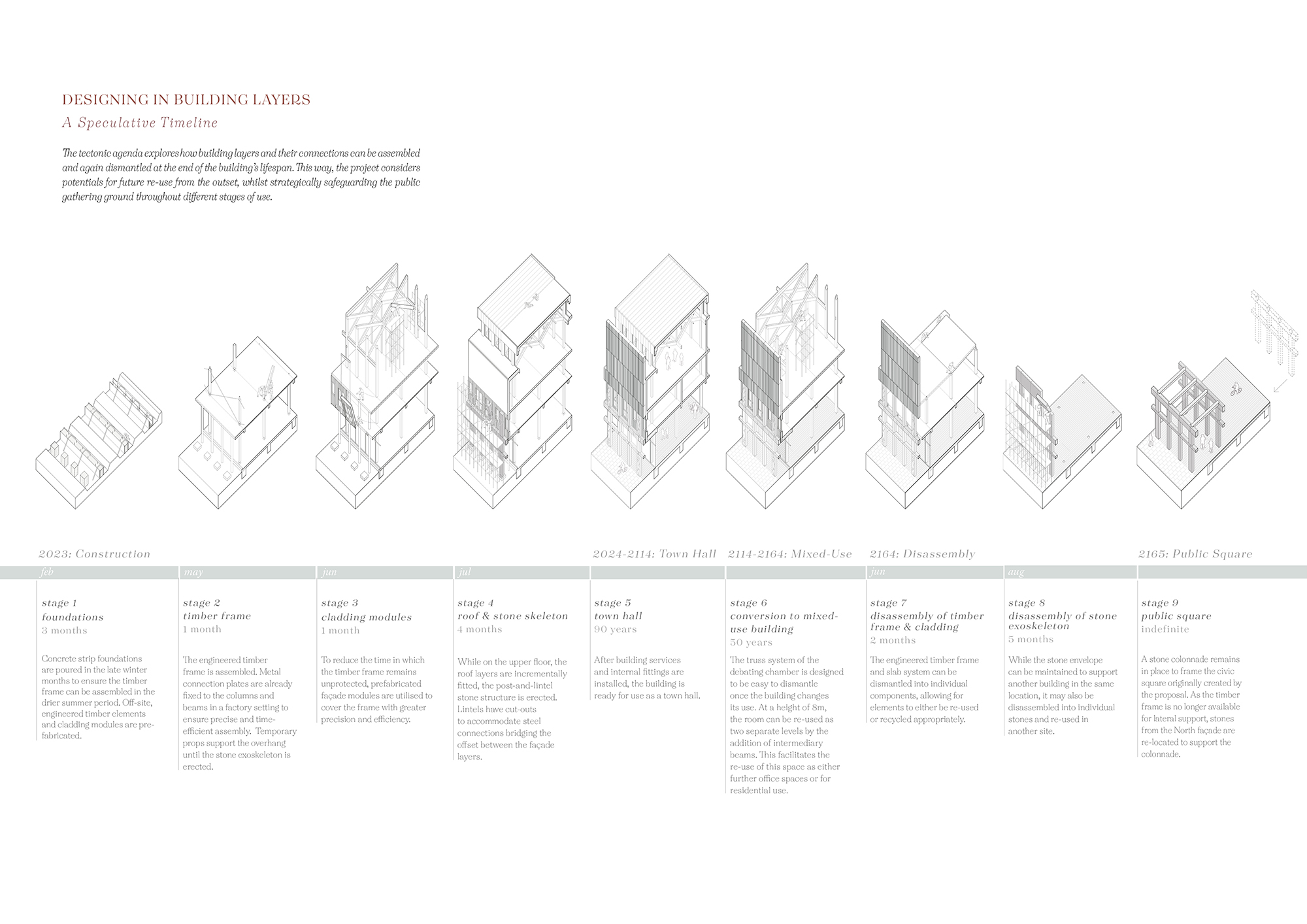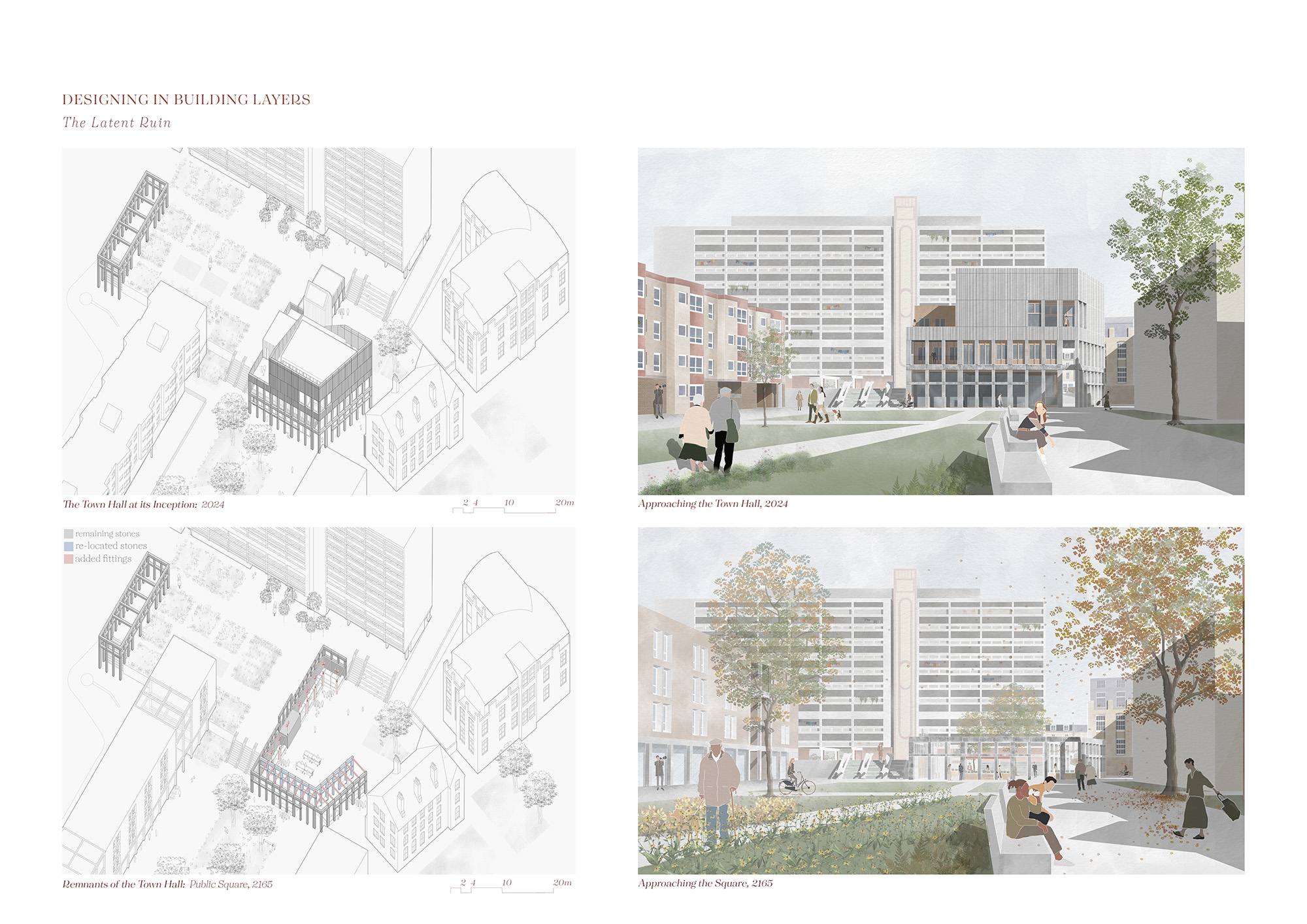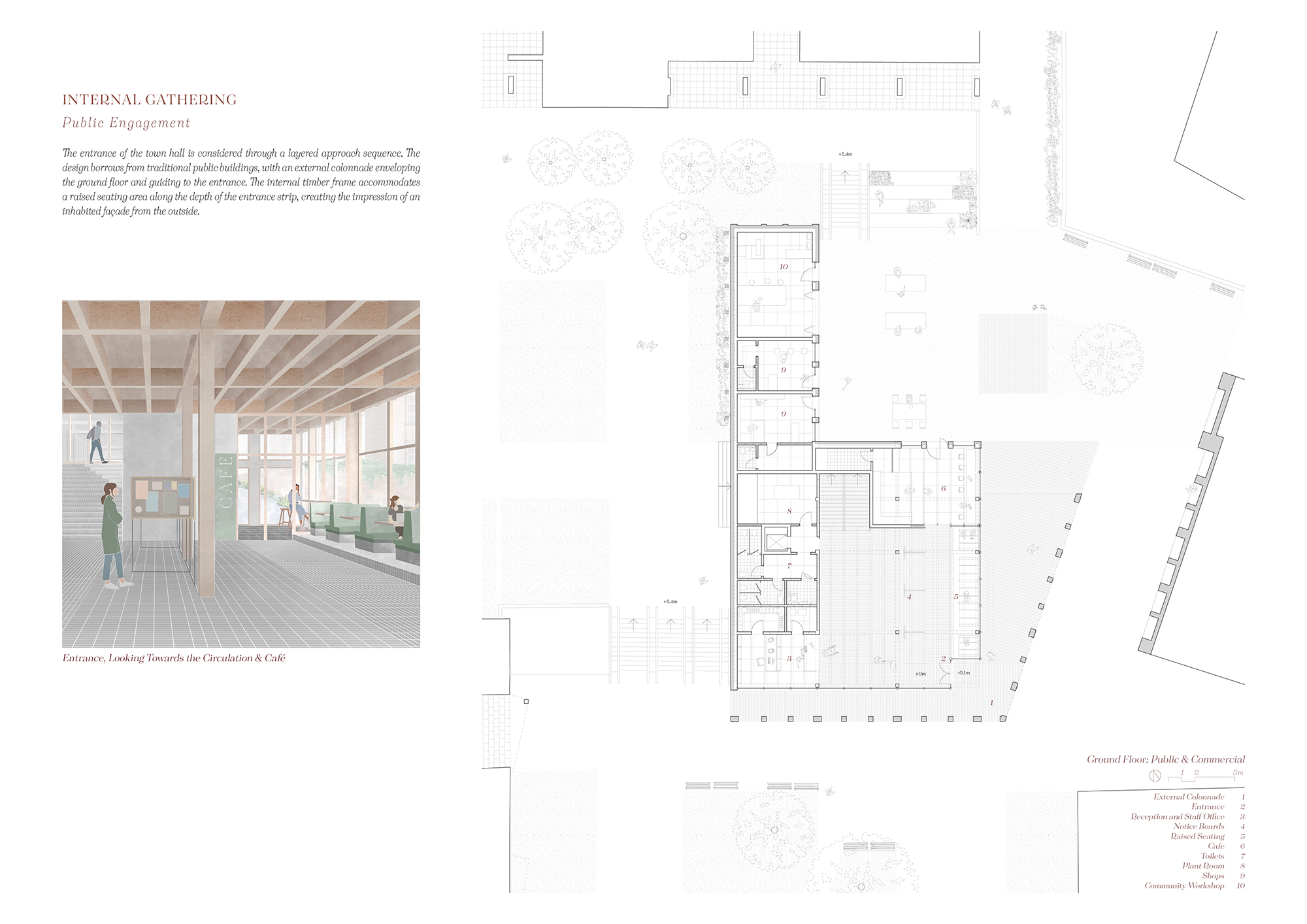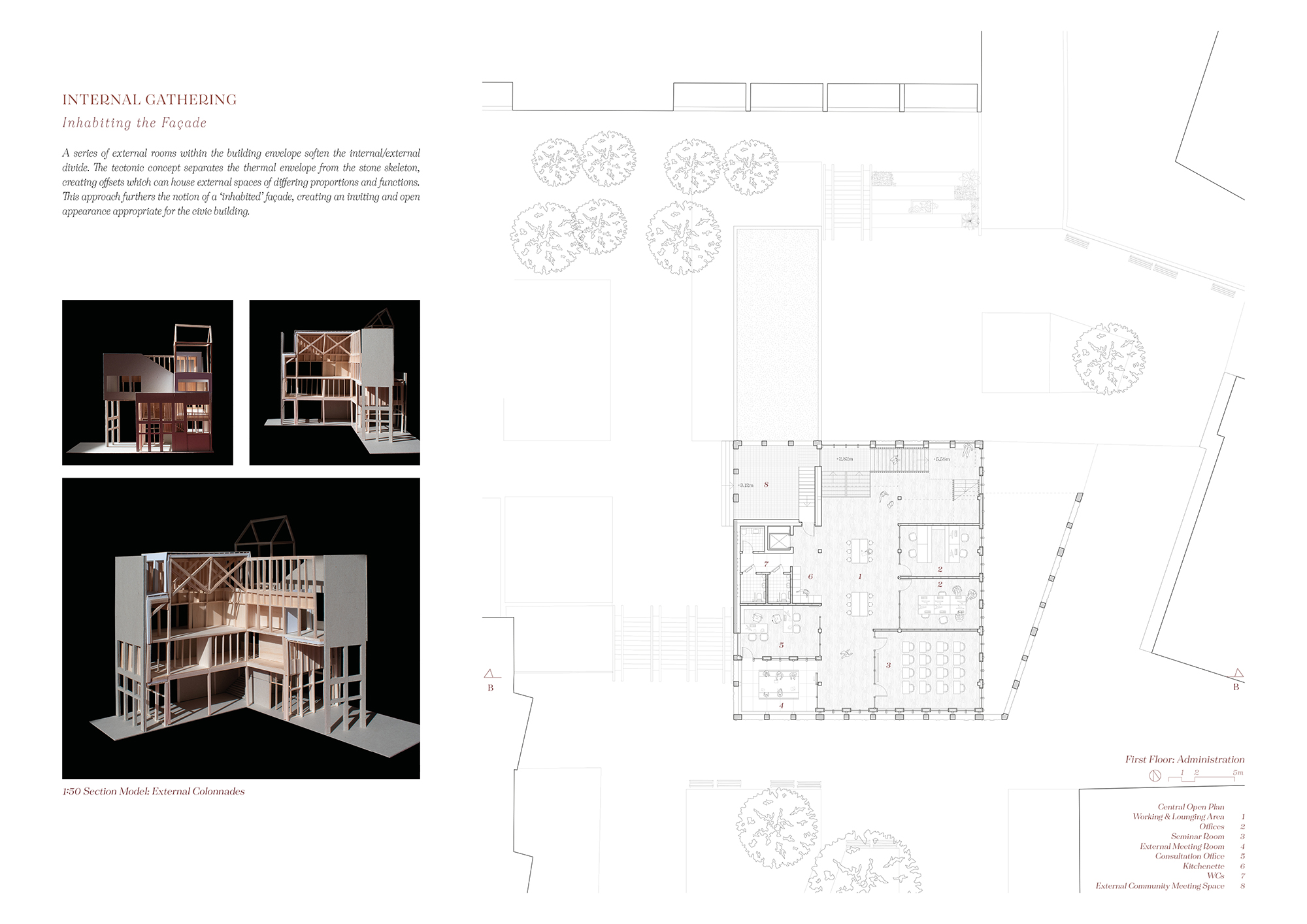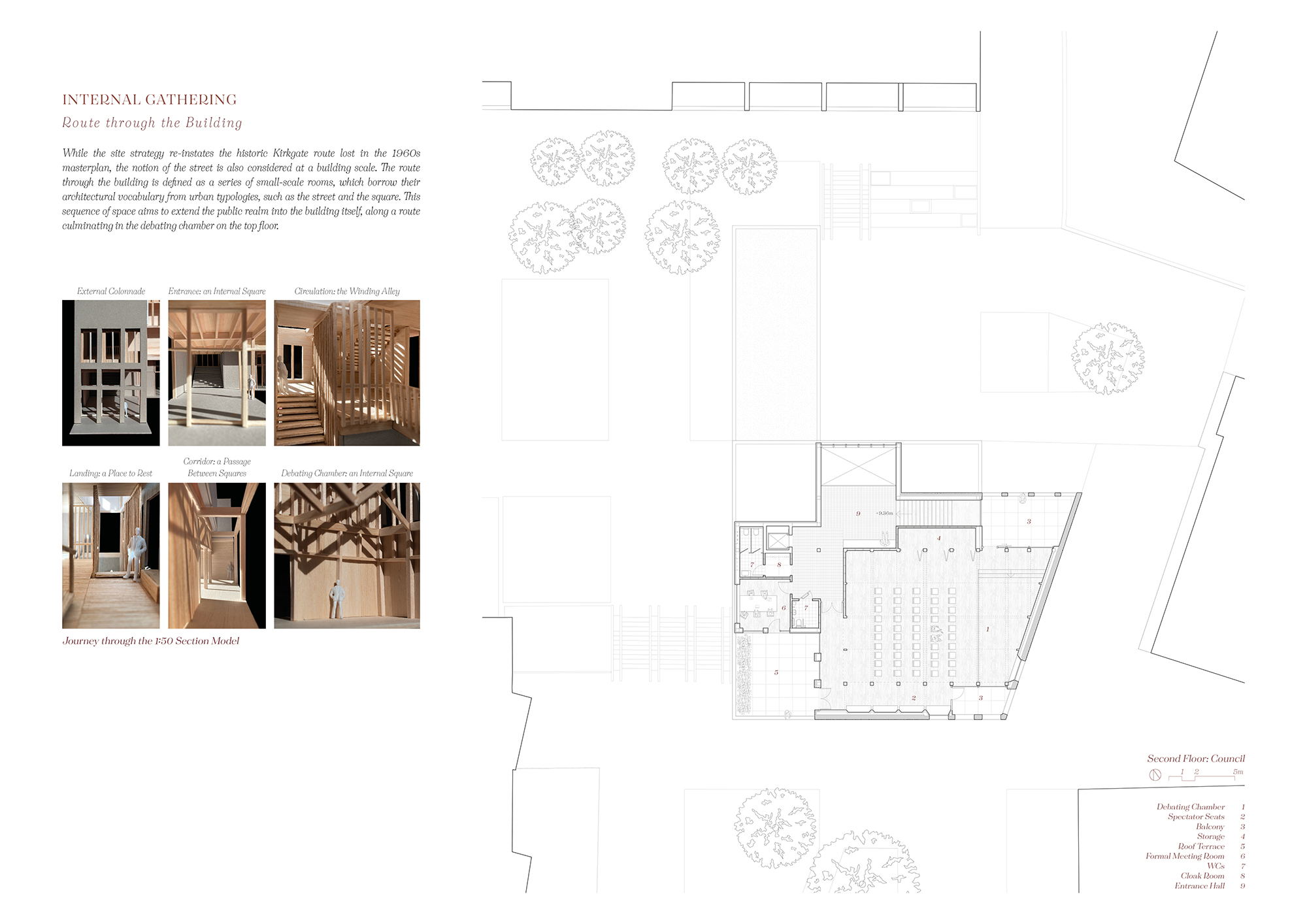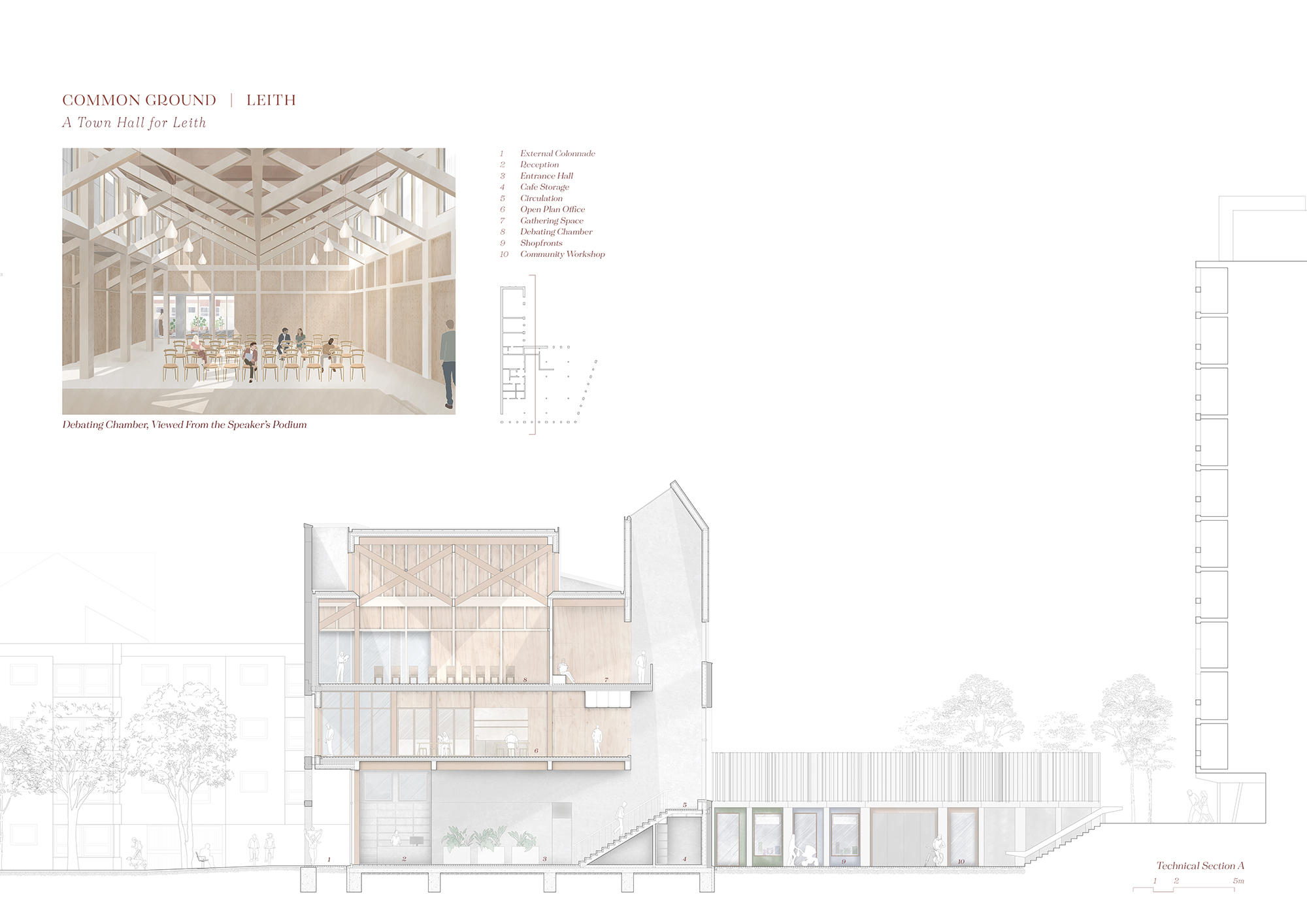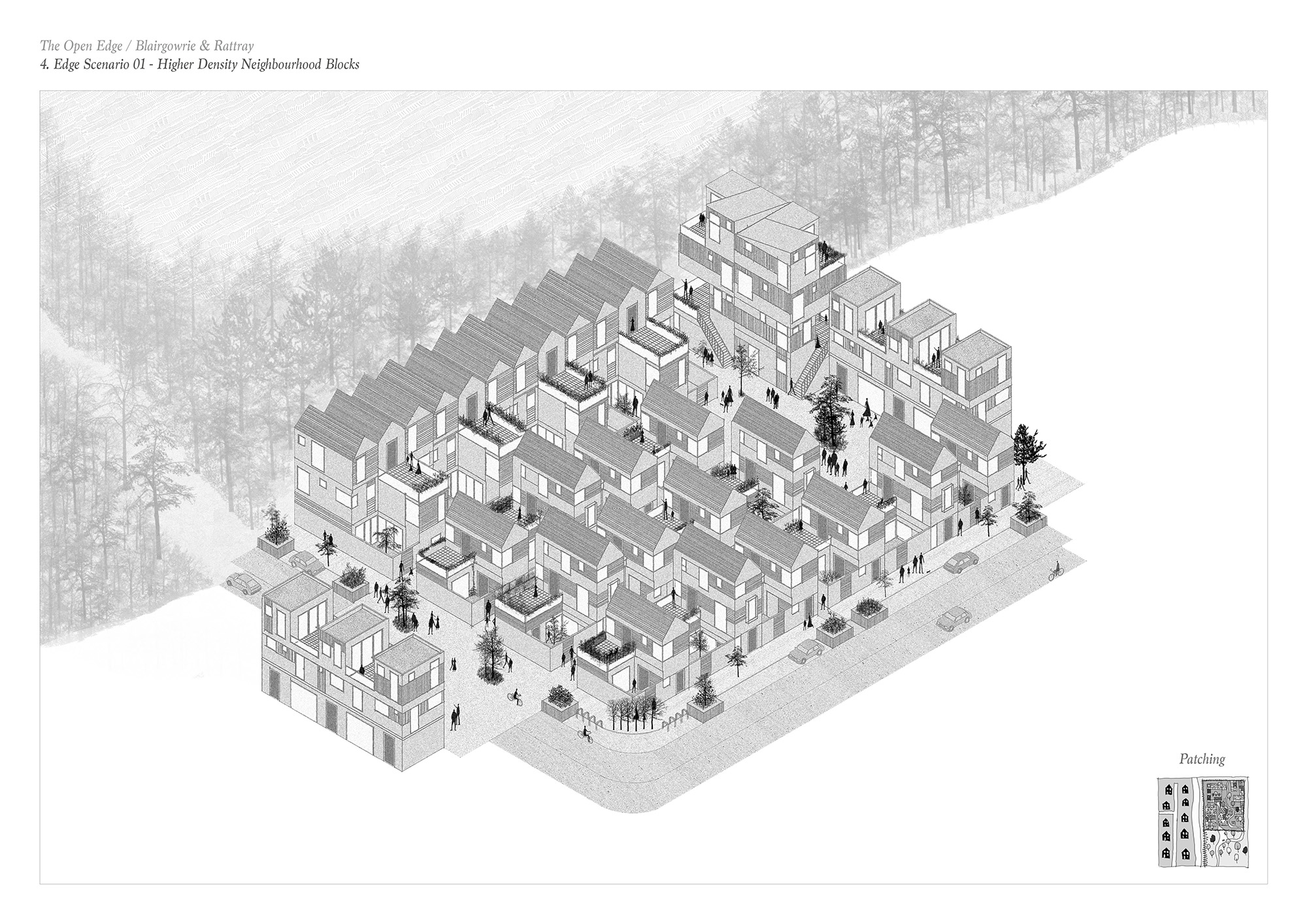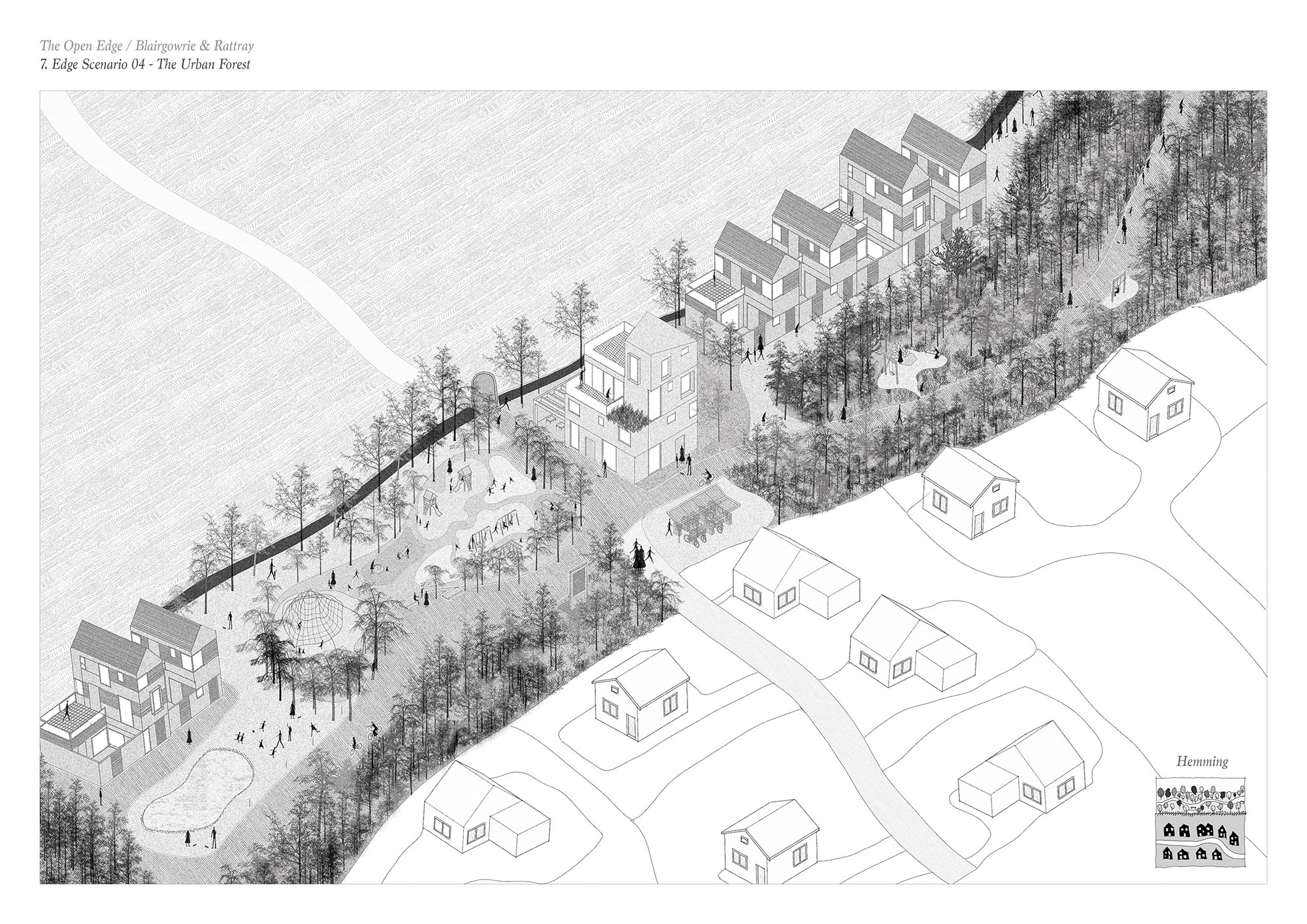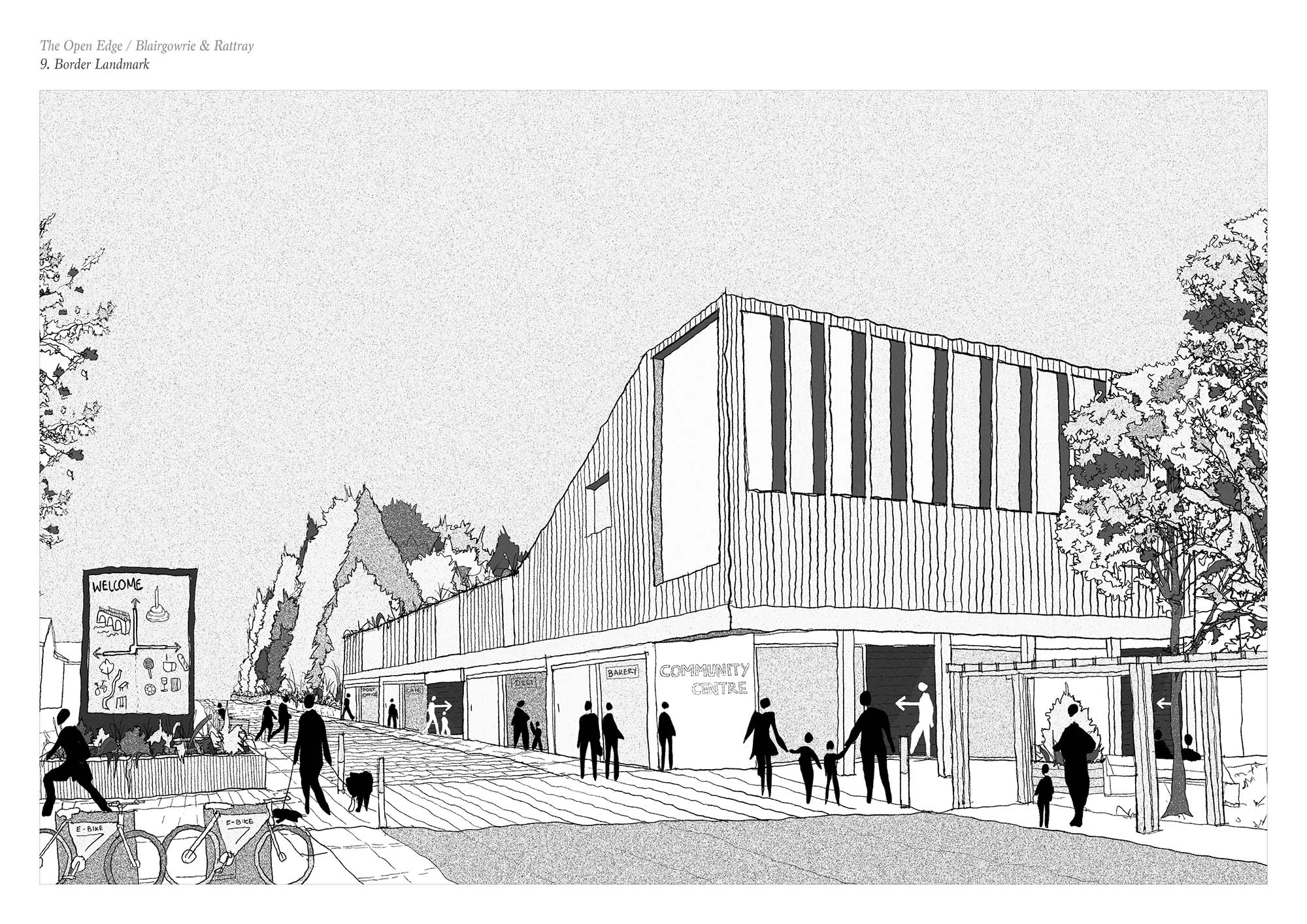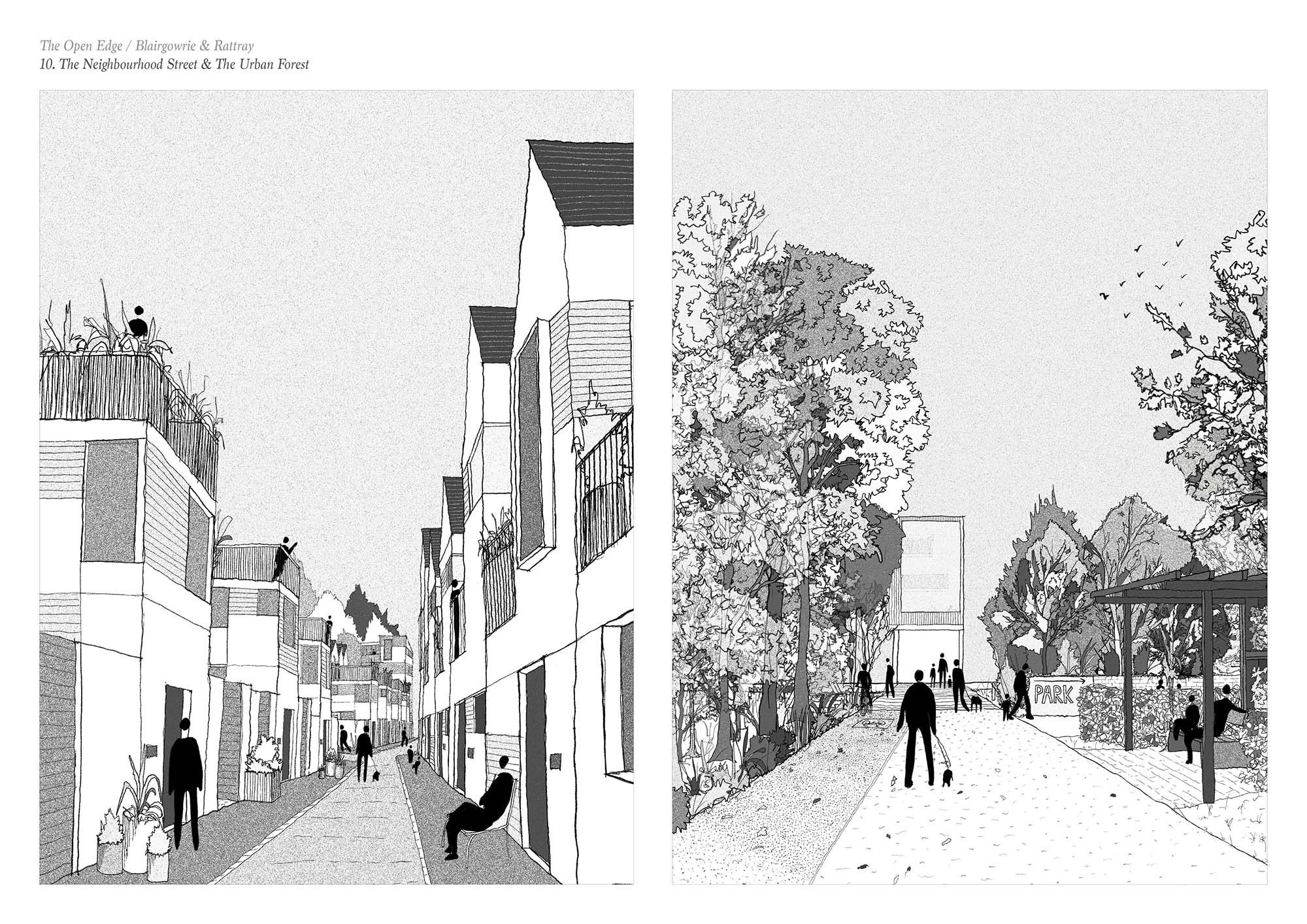Congratulations to all winning and commended students at this year's Architecture and Design Scotland and RIAS Scottish Student Awards for Architecture!
The student awards mark the continuing standards of Scottish architecture education. It ensures that both construction professionals and the public can enjoy the creativity and vision of Scotland's future architects.
This year's Architecture and Design Scotland and RIAS Scottish Student Awards for Architecture brought over 60 entries from five Scottish schools for architecture. The entries included projects that span various environments such as cities, canals, and rural and island settings.
The projects submitted this year continue to push the boundaries of how design can contribute to a more sustainable future. And as we look at each project, the ingenuity each student brings to the drawing board gives us confidence for the future.
The Andy MacMillan Memorial Lecture at Collective Architecture
We announced this year's winners at the annual Andy MacMillan Memorial Lecture on 27 October. The lecture was delivered by Paul Stallan, Design Director of Stallan-Brand and was our first in-person student awards event since 2019.
We also shared the graduating Landscape Student Awards 2022 at the event, from the Landscape Institute Scotland and Edinburgh School of Architecture and Landscape Architecture.
Explore this page to learn more about this year's winning and commended projects for the Architecture and Design Scotland and RIAS Scottish Student Awards 2022.
Navigate to the award categories
Click on the links below to explore the winning and commended entries for each award category:


RIAS Rowand Anderson Silver Medal for Best 5th Year Student
Winner: The Pre-Landfill by Karlis Kukainis
With stunning visuals, Pre-Landfill by Karlis Kukainis from Mackintosh School of Architecture is an extremely well thought out project that explores a renovation strategy for a vacant hospital in Glasgow.
The Judges thought that this “playful project exhibits the art in architecture and shows that there can be fun beyond science”. It does this by testing the limits of reuse practices of reclaimed materials from demolished buildings which will be key to how we tackle the Climate Emergency.
This project intends to reveal the inefficiency of the current construction, demolition and waste management practices and that designers can have a great role in reversing this by being creative and persistent.
Examining a way of reversing the urban sprawl found within northern Italian towns Above/Below by Joe Sampey from Mackintosh School of Architecture is a tactile design that the Judges called “grounded and humble”.
The project aims to revitalise and connect unused open spaces within the city. This creates a network of green spaces that invigorates the city with new ecosystems, reduces traffic and encourages human interaction. In particular, the Judges admired how this design “integrates biodiversity into several uses within a city and helps to build communities”.
Since the pandemic, weaknesses of the food system have been exposed. The People's Food Exchange by Terence Ho from University of Strathclyde attempts to address this by building local and regional food systems that reduces the number of intermediaries between the producer and consumer.
The project recognises the scale of the coming challenges and the Judge's study of this project noted that while ambitious, “it is essential to tackle the challenges we face” and commended the project for using the natural geography of the area.


Architecture and Design Scotland Award for Best 3rd Year Student
Winner: Common Ground - Leith by Inka Eismar, ESALA
Public housing estates often face physically and socially intertwined challenges. This proposal by Inka Eismar from ESALA for the New Kirkgate development in Leith introduces a town hall to the fragmented site. It includes a programme intersecting the local government and grassroots movements that could be an asset to the community and enhance the lives of those people.
The long life loose-fit approach, where the buildings can be taken apart and adapted, won the Judges over. They complimented “well rounded thinking” and “exquisite drawings of the pronounced architecture”.
The Maryhill Food Exchange, by Philippa Cook from Mackintosh School of Architecture, positions urban farming at the heart of a new sustainable food plan for Glasgow. The Judges admired how you could “project yourself into the space to get a feel for the project”. The Food Exchange uses natural materials to connect occupants to the landscape beyond, where planted orchards, vegetable gardens and wildflowers sprawl along the canal.
The Urban Food Exchange by Joachim Brönner from Mackintosh School of Architecture was complimented by the Judge’s by its “genius use of the industrial wasteland along the canal”. It connects people from near and far who are keen to learn from each other's skills and understanding to master growing, cooking, and living on a healthy diet. Here, fruit, vegetables, and grains are prepared, shared, and distributed to local and wider communities.


Architecture and Design Scotland Urban Design Award
Winner: The Open Edge by Sam Morman, University of Dundee
The Open Edge by Sam Morman from University of Dundee was called “Absolutely outstanding” by the Judge’s. This considered design project explores a strategic response to urban sprawl by creating a defined settlement edge for the town of Blairgowrie and Rattray.
The Judges admired the hand drawing aspect that allows you to fill in the gaps and creates a free-flowing aesthetic that pays attention to context with careful consideration for the land.
This project promotes a more compact urban form that redirects future growth inwards, restricts suburban expansions, improves proximity to essential amenities and preserves the town's productive landscape.
Lisbon is characterised by the river Tagus and this project by Ioulia Voulgari from Mackintosh School of Architecture, seeks to create an urban park and water treatment centre that includes public pools within the park area to show how the harbour can regain its public and recreational identity.
Following a collect-treat-enjoy approach, water from the valley is collected, treated through mechanical treatment and wetlands and used by the public bath house, as well as irrigation for the landscape surrounding it. The Judges complimented the good use of natural resources of the city and how it could work to improve the lives of the local population.
Architecture and Design Scotland Sustainable Design Award
Winner: The Pre-Landfill by Karlis Kukainis, Mackintosh School of Architecture
The thesis by Karlis Kukainis from Mackintosh School of Architecture explores a renovation strategy of a vacant hospital in Glasgow through testing the limits of reuse practices of reclaimed materials from demolished buildings. The Judges called this project “Fantastical” and that it “Tackles the real issue with a genuine agenda”.
Reuse methods of the reclaimed materials are utilised to inform the building’s programme and architecture by proposing a 20th-century heritage reuse institute, public workshops, affordable rent studios, commercial spaces, and an innovation centre. Imperfect materials are embraced over immaculate surfaces challenging the public’s view of decay as a sign of sustainability through longevity.
Above/below Joe Sampey from Mackintosh School of Architecture aims to revitalise and connect unused, existing open spaces within northern Italian towns through a new green infrastructure masterplan.
The Judges complimented how “the cross-section of big to small is well resolved and thought through”. Each space took on different typologies, creating a complex network of green spaces invigorating the city with new ecosystems, reducing traffic and encouraging human interaction.
This project by Rachel McLure from University of Strathclyde aims to highlight how people and biodiversity can work together to create a productive, sustainable landscape in Scotland.
The Judges admired this “hugely ambitions” project which highlights how people and biodiversity can work together to create a productive, sustainable landscape in Scotland. Since the beginning of Rewild Scotland fifty years ago, a network of projects has been set up throughout Scotland, each working towards increasing biodiversity and productivity.
The RIAS Andy MacMillan Drawing Award
Winner: The Open Edge by Sam Morman, University of Dundee
This design research project by Sam Morman from University of Dundee explores a strategic response to urban sprawl by creating a defined settlement edge to the town of Blairgowrie and Rattray.
The Judges revered the “Elegant set of drawings” and thought it was the very worthy winner of the Andy MacMillan Drawing Award. The ‘Open Edge’ looks to reject the town’s current identity as a dormitory town to the contrary as an attractive liveable, sustainable and biodiverse place.
By restricting future suburban sprawl, the town has the potential to build greater resilience into the community. The project takes a multi-faceted approach to sustainability. Key principles include a restrained approach to land consumption; the protection and enhancement of green infrastructure; repurposing vacant buildings and brownfield sites; the need to conform to the 20-minute neighbourhood agenda and promoting the use of sustainable transport methods.
The thesis by Tze June Goh from Mackintosh School of Architecture tells a tale of two cities divided by a wall, erected by the wealthy communities to the north of River Clyde to protect themselves from flooding caused by rising sea levels.
These “remarkable drawings” show a fortress of dryness versus a resilient city using water as an urban shared surface. Portrayed through a progression of futuristic timeline, the Two Cities undergo degradation, adaptation and rebirth as beginnings of the new hydro-age Glasgow.
How can Glasgow utilize the extremities of the weather and farm it into resources, fuelling a utopian city in a dystopian future?
Examining a way of reversing the urban sprawl found within northern Italian towns, Above/Below by Joe Sampey from Mackintosh School of Architecture is a “very intriguing and engaging” set of drawings. Each space took on different typologies, creating a complex network of green spaces invigorating the city with new ecosystems, reducing traffic and encouraging human interaction.

